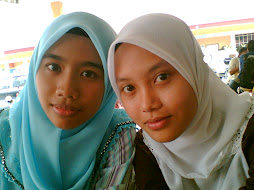Wednesday, February 3, 2010
hmm...today is thursdae...
Wednesday, October 29, 2008
Are ICT-enhanced educational projects sustainable?
One aspect of development programs that is often neglected is sustainability. The long history of development aid has shown that too many projects and programs start with a bang but all too soon fade out with a whimper, to be quickly forgotten. This is true for many ICT-based educational projects as well. In many instances, these projects are initiated by third party donors—such as international aid agencies or corporations—and not enough attention is paid to establishing a mechanism by which the educational institution or community involved can pursue the project on its own or in partnership with other stakeholders after the initiating donor exits. But cost and financing are not the only barriers to sustainability. According to Cisler, the sustainability of ICT-enabled programs has four components: social, political, technological, and economic. [73]
Economic sustainability refers to the ability of a school and community to finance an ICT-enabled programme over the long term. Cost-effectiveness is key, as technology investments typically run high and in many cases divert funds from other equally pressing needs. Planners should look to the total cost of ownership (see preceding discussion on cost) and build lucrative partnerships with the community to be able to defray all expenses over the long term. The need to develop multiple channels of financing through community participation ties economic sustainability closely to social and political sustainability.
Social sustainability is a function of community involvement. The school does not exist in a vacuum, and for an ICT-enabled project to succeed the buy-in of parents, political leaders, business leaders and other stakeholders is essential. Innovation can happen only when all those who will be affected by it, whether directly or indirectly, know exactly why such an innovation is being introduced, what the implications are on their lives, and what part they can play in ensuring its success. ICT-enabled programs must ultimately serve the needs of the community. Thus community-wide consultation and mobilization are processes critical to sustainability. In short, a sense of ownership for the project must be developed among all stakeholders for sustainability to be achieved.
Political sustainability refers to issues of policy and leadership. One of the biggest threats to ICT-enabled projects is resistance to change. If, for instance, teachers refuse to use ICTs in their classrooms, then use of ICTs can hardly take off, much less be sustained over the long term. Because of the innovative nature of ICT-enabled projects, leaders must have a keen understanding of the innovation process, identify the corresponding requirements for successful adoption, and harmonize plans and actions accordingly.
Technological sustainability involves choosing technology that will be effective over the long term. In a rapidly changing technology environment, this becomes a particularly tricky issue as planners must contend with the threat of technological obsolescence. At the same time, there is the tendency to acquire only the latest technologies (which is understandable in part because these are the models which vendors are likely to push aggressively) Generally, however, planners should go with tried and tested systems; stability issues plague many of the latest technologies. Again, the rule of thumb is to let the learning objectives drive the technology choice and not vice versa—the latest technologies may not be the most appropriate tools for achieving the desired educational goals.When making technology decisions, planners should also factor in not just costs but also the availability of spare parts and technical support.
hehe..another one...
There are many learning theories in relation to education. A teacher can use one or a combination of theoretical approaches to enhance the learning process in the classroom. This essay will discuss the behavioral, cognitive, and humanistic theories of learning, as well as the role of the student and teacher in using each theory, and how a unit of multiplication in a third grade classroom could possible be taught using each approach.
Behavioral Learning Theory
According to the behavioral theory, learning involves alterations in modifications in behavior (Barrett, 2006). Behaviorists believe that what one learns is influenced by the environment instead of the student. The theory of behavioral learning also contends that contiguity and reinforcement, whether positive or negative, are essential to the learning process (Smith, 2005).
The teacher's function, according to the behavioral learning theory, is to make use of negative reinforcers to end unwanted behavior and positive reinforcers to strengthen wanted behavior. Reinforcers may also be used to teach new skills. This process is referred to as shaping. Teacher's who follow the behaviorists are also expected to use punishment and consequences to bring about a behavior change and facilitate learning (Slavin, 2003, pp. 144-151). The only thing required by students is the role of active responder. Students need to be able to respond to any reinforcement used by the teacher and willingly change their behavior to enable learning.
Behavioral learning concepts can be used to assist in teaching a unit on multiplication. This can be done by using positive reinforcers to shape the way students learn the material. For example, the teacher could give each student a piece of candy once they effectively learn the times table for each number, one through ten. The students may be more likely to work harder because they know they will receive a desired reward for their work. Teachers can also use drill and practice to increase the likelihood that the information in the unit will be retained.
something for all of you..


my reference:-
URL: http://129.7.160.115/INST5931/Behaviorism.html



